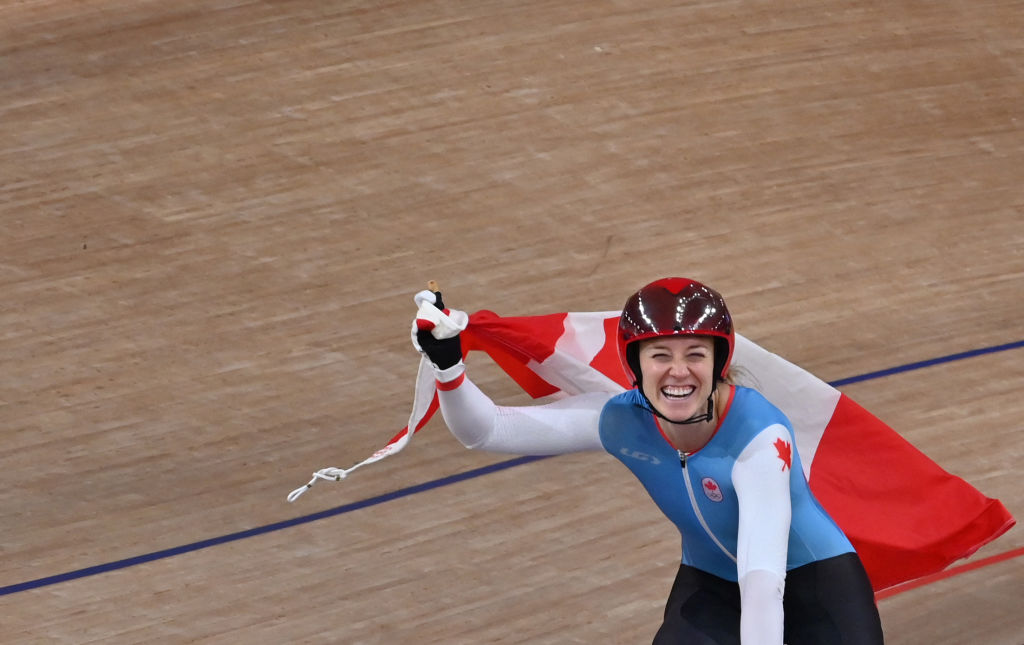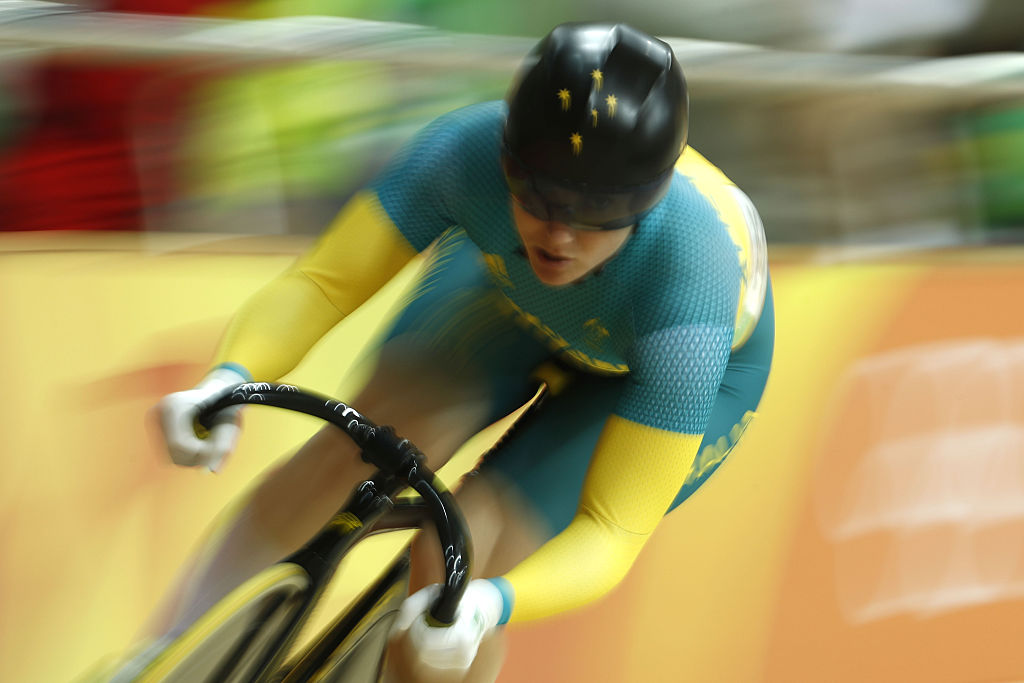
The Individual Sprint was held at the first modern Olympic Games in Athens, Greece in 1896. It was then held sporadically, in 1900 and 1908, until returning as a mainstay for men’s track competition in 1920. The women’s sprint was the first track event held for women in the Olympic Games, added at the 1988 Seoul Olympic Games.
This classic, short distance race begins with 200m time trials to set up brackets of qualified riders, followed by knockout heats pitting two riders against each other for three laps to reach the finals.
The first phase is qualifying, which consists of a flying start with a build-up of two-and-a-half laps and official time taken in the final 200 metres, indicated to racers and spectators by the white line drawn across the track for the final section. And it’s not just about the finish line, but on the build-up laps these riders can use all the real estate of the track itself, many times staying high on the banking to use the descent to gain speed.
These times determine the seeding of the 30 starters, with the fastest 24 riders progressing to more ‘knockout’ phases to whittle down the competition to the top four to contest for three medals. It sounds complex, but it becomes a progressive series of head-to-head showdowns of a faster rider versus a slower.
The 1/32 phase begins with the number-one seed facing the number-24 seed, the number-two seed faces the number-23 seed and so on. The 12 winners advance to the next round, while the losers from each heat will be sent to a “repechage” round and are given another opportunity to reach the 1/16 round. Each repechage will feature three riders. The winner of each of the four repechage heats will advance to the 1/16 round.
These 16 riders move to the third knockout round, called the 1/8 phase, and the two-rider races are a best-of-three engagement until the field is reduced to eight for the quarterfinal and on to the final four. At that point, the two semi-final winners race for gold and silver, while the semi-final losers ride for the final bronze.
The word ‘sprint’ indicates blazing speeds and that is evident in the closing 200 metres of each contest, but many times a sprint race can be a slow-motion test of tactics. It used to be common to see a rider at the front of this two-person showdown come to a complete standstill on the track, or a ‘track stand’ but the rules only allow riders to bring the race to a stop twice. This is the cat-and-mouse tactic to lure an opponent to the front, as the second-placed rider has an advantage with drafting, then using the slipstream to rocket across the finish line first.
History

The men’s world title was first contested in 1895 and was only interrupted in 1939. As a country, France leads the way with 84 total medals during this time, more than double the next closest nations of Netherlands and Italy with 37 each. Japan’s Koichi Nakano won 10 consecutive sprint crowns between 1977-1986.
Daniel Morelon of France has won the most Olympic medals in the Individual Sprint for men with four, two gold in 1968 Mexico City and 1972 Munich, one silver in 1976 Montreal, and one bronze in 1964 Tokyo.
For the women in the Olympic Games, Australia and Great Britain have amassed four total medals each in the Individual Sprint. Aussie Anna Meares leads the way with one medal in each colour - bronze in 2004 Athens, silver in 2008 Beijing and gold in 2012 London.







